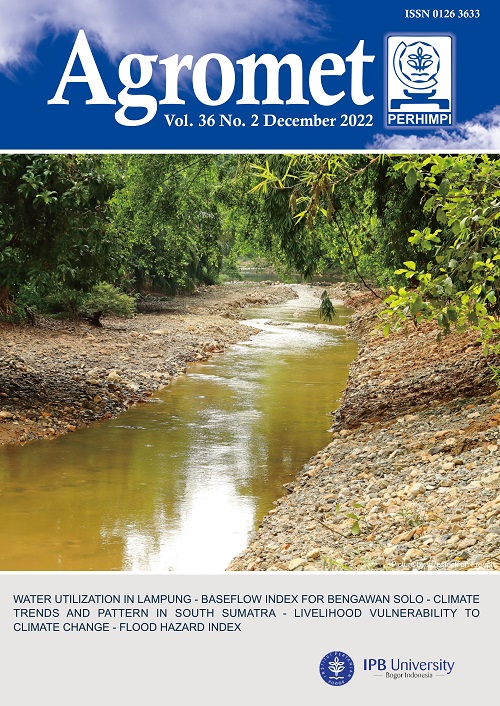Assessment of Livelihood Vulnerability to Climate Change Using Three Index Methods
Abstract
Vulnerability assessment based on composite indices such as Livelihood Vulnerability Index (LVI) or Sistem Informasi Data Indeks Kerentanan (SIDIK) is widely used, and it is practically known as the initial step to determine the adaptation policies for climate change. Various vulnerability assessment methods that have been developed including LVI and SIDIK raise the possibility that different methods can lead to different conclusions. This research aimed to assess whether the results of vulnerability analysis using different methods on the same data offer consistent results. Comparative studies on this topic based on the different indexing methods may also provide a beneficial insight for stakeholders. We tested LVI, LVI-IPCC, and SIDIK methods in Tanah Merah and Lobuk villages in Sumenep Regency, East Java. We collected the primary data based on interviews with households in the field. Climate data (monthly rainfall, maximum, and minimum air temperature) with 0.05o spatial resolution from 2001-2020 was obtained from CHIRPS and TerraClimate. Our results showed that both villages were consistently categorized as vulnerable according to LVI, LVI-IPCC, and SIDIK methods. This result is also consistent at village and household levels. The findings showed difference in the key indicators driving the vulnerability in both villages. The key indicators in Tanah Merah Village were households without waste management, training from government, and no early warning system. In contrast, the key indicators driving the vulnerability for Lobuk were households with small land ownership and households with debt. Further, action recommendations for Tanah Merah are providing waste banks and waste sorting facility, upgrading public capacity through workshops, and adopting social media to share climate-related information. For Lobuk, the recommendations are the determination of regulatory instruments related to space utilization in the coastal area, mapping area affected by climate change, and financial literacy improvement especially promoting savings in the community.
Authors

This work is licensed under a Creative Commons Attribution-NonCommercial 4.0 International License.

